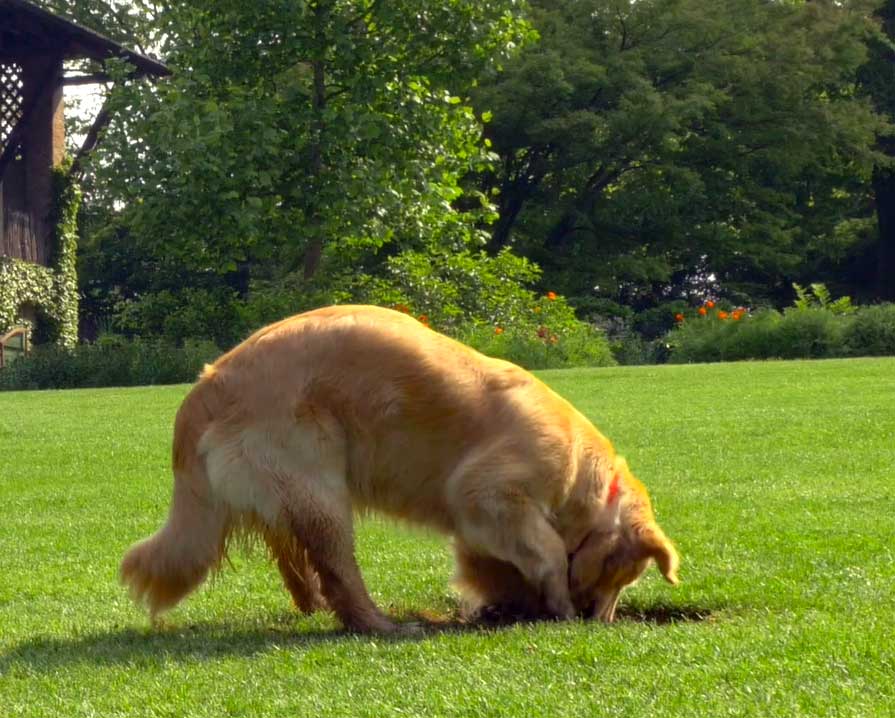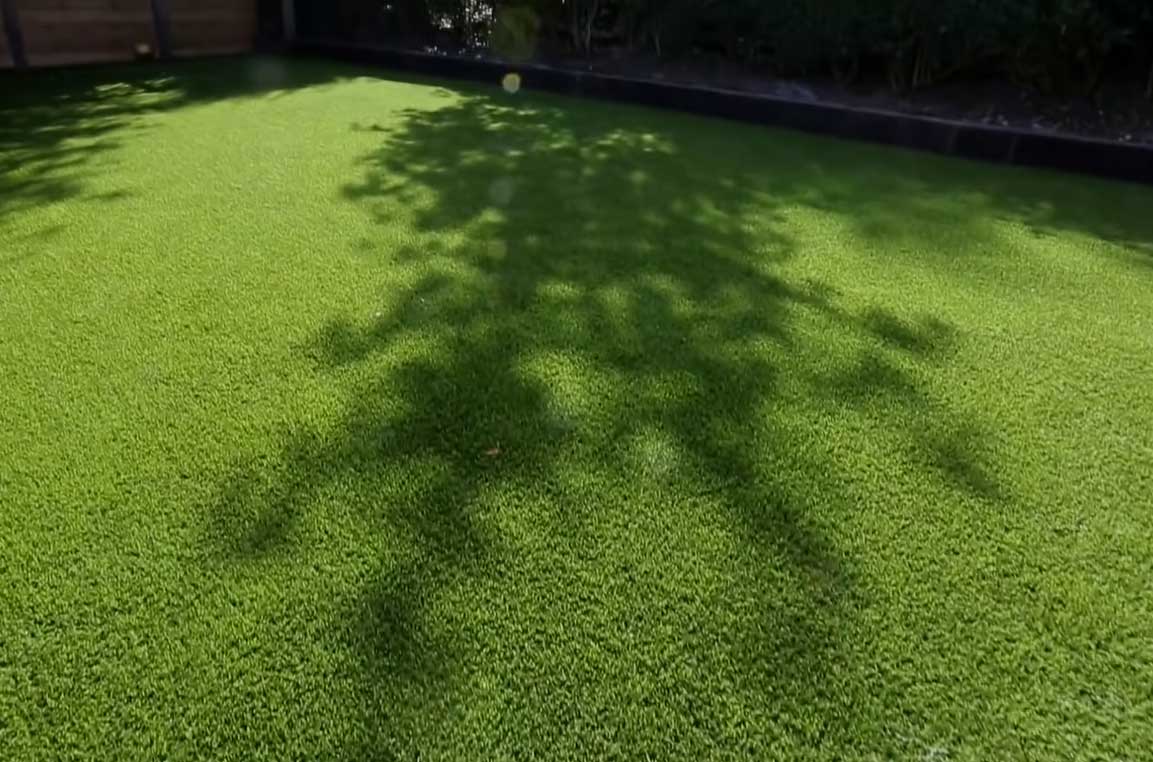Can Dogs Dig Artificial Grass
Yes, dogs can dig artificial grass. However, there are several techniques and measures you can take to discourage them from doing so.
Artificial grass can be an excellent alternative to natural grass for dog owners, providing a durable and low-maintenance surface for their pets to play on. While some dogs may still be tempted to dig, there are steps you can take to prevent this behavior.
We will explore why dogs dig artificial grass, the possible consequences of their digging, and effective ways to deter them from this behavior. By understanding the reasons behind their digging and implementing preventive measures, you can ensure that your artificial grass stays intact and your furry friend remains happy and engaged.
Related post-
Why Do Dogs Dig Grass?
Dogs may dig artificial grass due to their natural instincts, boredom or lack of exercise, and the desire to seek attention.Dogs have an innate urge to dig, which can be traced back to their ancestors’ hunting and territorial behaviors. This instinct remains strong even when they are surrounded by artificial materials like fake grass.
Additionally, dogs may resort to digging when they are bored or not getting enough exercise. Digging provides them with both mental and physical stimulation, helping to alleviate their restlessness. Furthermore, dogs may dig artificial grass as a way to seek attention from their owners or satisfy their need for interaction. They may perceive digging as a way to engage their owners or get them to join in the play, inadvertently reinforcing this behavior.

Consequences Of Dogs Digging Artificial Grass
Dogs digging artificial grass can cause various problems for both the turf and the beloved pet. The damage to the turf can be significant, leaving unsightly bare patches that are difficult to repair. Additionally, the continuous digging can disrupt the overall stability of the artificial grass, leading to potential tripping hazards for both humans and dogs.
Another major concern is the dangers of ingestion. Dogs may accidentally ingest bits of the artificial grass while digging, which can result in serious health issues. Ingesting artificial grass can lead to digestive problems such as obstructions or intestinal blockages, requiring immediate veterinary intervention.
Moreover, dogs digging up the artificial turf can make the outdoor space look unattractive. The once lush and neatly maintained lawn can be transformed into a messy and patchy area.
How To Prevent Dogs From Digging Artificial Grass
Providing mental and physical stimulation for your dog is essential to prevent them from digging up your artificial grass. By engaging them in regular exercise and playtime, you can help release their pent-up energy. This can involve daily walks, interactive games, and toys that challenge their mind.
Creating a designated digging area is another effective method. By designating a specific spot in your yard where your dog can dig, they’ll be less inclined to dig up your artificial grass. This area should be filled with loose soil or sand and buried toys or treats to make it more enticing.
Using deterrents or sprays can also discourage dogs from digging. There are pet-friendly products available that have an odor or taste that dogs find unappealing. Spraying these products on your artificial grass can make it less tempting for your dog to dig.
Training Techniques To Stop Dogs From Digging
Dogs digging on artificial grass can be a nuisance, but with the right techniques, you can train them to stop this behavior. Positive reinforcement is key in training. Reward your dog with treats or praise when they refrain from digging, reinforcing the idea that this is the desired behavior.
Redirecting behavior is another effective technique. Provide your dog with alternative activities like interactive toys or designated digging areas filled with sand or soil.
Consistency and patience are crucial throughout the training process. Consistently reinforce the desired behavior and avoid punishing or scolding your dog for digging. Instead, redirect their attention to the approved activities and reward their cooperation.
| Training Techniques to Stop Dogs from Digging |
|---|
| Positive reinforcement: Reward desired behaviors with treats or praise. |
| Redirecting behavior: Provide alternative activities like interactive toys. |
| Consistency and patience: Reinforce desired behavior consistently and avoid punishment. |
Choosing The Right Artificial Grass For Dogs
When considering artificial grass for dogs, it is important to select a product made from durable materials. Look for options that are designed to withstand the wear and tear of frequent use by pets. Additionally, proper drainage is essential for preventing puddles and facilitating easy cleanup. Opt for artificial grass that has efficient drainage systems in place to prevent water from pooling on the surface.
Odor control is also a key consideration when selecting artificial grass for dogs. Look for products that have integrated technologies or features, such as antimicrobial treatments or odor-absorbing infills, to help keep your outdoor area smelling fresh. By choosing artificial grass that addresses these three factors – durability, drainage, and odor control – you can ensure a long-lasting and low-maintenance solution for your furry friends’ needs.
Maintenance Tips For Artificial Grass In Dog-friendly Areas
Regular cleaning and deodorizing are essential for maintaining artificial grass in dog-friendly areas. Cleaning should be done on a weekly basis to remove any dirt, debris, and pet waste that may have accumulated. Using a garden hose or a power washer with a low-pressure setting can help to thoroughly clean the grass. Deodorizing is also important to keep the area smelling fresh and clean. Using a pet-friendly deodorizer specifically designed for artificial grass can help to eliminate any unpleasant odors.
Proper drainage maintenance is crucial to ensure that the artificial grass remains in good condition. Clearing any debris that may be blocking the drainage holes is important to prevent water from pooling on the surface. Additionally, checking the drainage system regularly and ensuring that it is functioning properly can help to prevent any water damage to the grass.
Frequent brushing of the artificial grass is necessary to prevent matting and maintain its aesthetics. Using a stiff-bristle brush or a power broom can effectively fluff up the grass fibers and keep them standing upright. Brushing also helps to redistribute infill materials and promotes even wear and tear.
Frequently Asked Questions
Can Dogs Damage Artificial Grass?
While dogs can play on artificial grass, their digging behavior can potentially damage the surface. This can result in uneven patches or tears in the turf. Proper training and providing alternative outlets for their energy can help mitigate this issue.
How Can I Stop My Dog From Digging Up Artificial Grass?
To prevent your dog from digging up the artificial grass, try providing them with designated digging areas filled with sand or soft soil. Incorporating toys and treats in these areas can also encourage them to dig there instead of damaging the artificial grass.
What Are The Alternatives To Artificial Grass For Dogs?
If your dog is prone to digging or damaging artificial grass, there are alternative options. You can consider using natural grass, gravel, or outdoor pet turf specifically designed to withstand the wear and tear caused by dogs.
Why Do Dogs Dig In Artificial Grass?
Dogs dig in artificial grass for various reasons, including seeking attention, burying toys or bones, instinctual behaviors, or trying to find cooler ground. Understanding the underlying cause can help address the issue and prevent further digging.
Conclusion
Overall, it is clear that dogs have the natural instinct to dig, and artificial grass is not an exception. However, by incorporating training, providing mental stimulation, and creating designated areas for digging, dog owners can help control their pets’ digging behavior on artificial grass.
By using these strategies, you can ensure the longevity and aesthetics of your artificial grass while still allowing your furry companion to enjoy their natural instincts. Ultimately, with a combination of training and proactive measures, you can have a harmonious coexistence between your dog and artificial grass.
